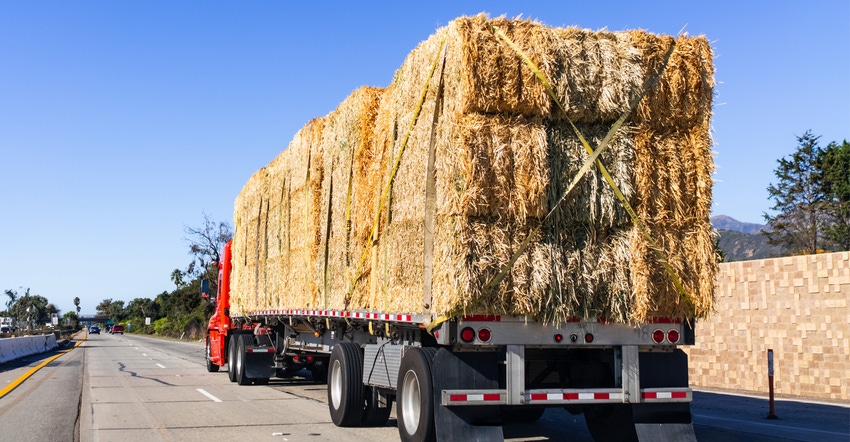December 6, 2021

In response to the severe drought conditions in the West and Great Plains, USDA announced its plans to help cover the cost of transporting feed for livestock that rely on grazing by updating the Emergency Assistance for Livestock, Honeybees and Farm-Raised Fish Program (ELAP).
The update will immediately cover feed transportation costs for drought-affected ranchers. USDA’s Farm Service Agency will provide more details and tools to help ranchers get ready to apply at their local USDA Service Center later this month at fsa.usda.gov/elap.
Loss assistance
ELAP provides financial assistance to eligible producers of livestock, honeybees and farm-raised fish for losses due to disease, certain adverse weather events or loss conditions as determined by the USDA secretary.
ELAP already covers the cost of hauling water during drought, and this change will expand the program begun in 2021 to cover feed transportation costs where grazing and hay resources have been depleted. This includes places where:
• Drought intensity is D2 for eight consecutive weeks as indicated by the U.S. Drought Monitor.
• Drought intensity is D3 or greater, or
• USDA has determined a shortage of local or regional feed availability.
Cost-share assistance will also be made available to cover the eligible cost of treating hay or feed to prevent the spread of invasive pests like fire ants.
Reimbursement
Under the revised policy for feed transportation cost assistance, eligible ranchers will be reimbursed 60% of feed transportation costs above what would have been incurred in a normal year. Producers qualifying as underserved (socially disadvantaged, limited resource, beginning or military veteran) will be reimbursed for 90% of the feed transportation cost above what would have been incurred in a normal year.
A national cost formula, as established by USDA, will be used to determine reimbursement costs, which will not include the first 25 miles and distances exceeding 1,000 transportation miles. The calculation will also exclude the normal cost to transport hay or feed if the producer normally purchases some feed. For 2021, the initial cost formula of $6.60 per mile will be used (before the percentage is applied) but may be adjusted on a state or regional basis.
Eligibility
To be eligible for ELAP assistance, livestock must be intended for grazing and producers must have incurred feed transportation costs on or after Jan. 1, 2021. Although producers will self-certify losses and expenses to FSA, producers are encouraged to maintain good records and retain receipts and related documentation in the event these documents are requested for review by the local FSA County committee. The deadline to file an application for payment for the 2021 program year is Jan. 31, 2022.
USDA offers a comprehensive portfolio of disaster assistance programs. On farmers.gov, the Disaster Assistance Discovery Tool, Disaster Assistance-at-a-Glance fact sheet, and Farm Loan Discovery Tool, can help producers and landowners determine all program or loan options available for disaster recovery assistance.
More information on this expansion to ELAP is forthcoming. In the meantime, more information is available at fsa.usda.gov/elap or by contacting a local USDA Service Center.
Source: USDA is solely responsible for the information provided and is wholly owned by the source. Informa Business Media and all its subsidiaries are not responsible for any of the content contained in this information asset.
You May Also Like




